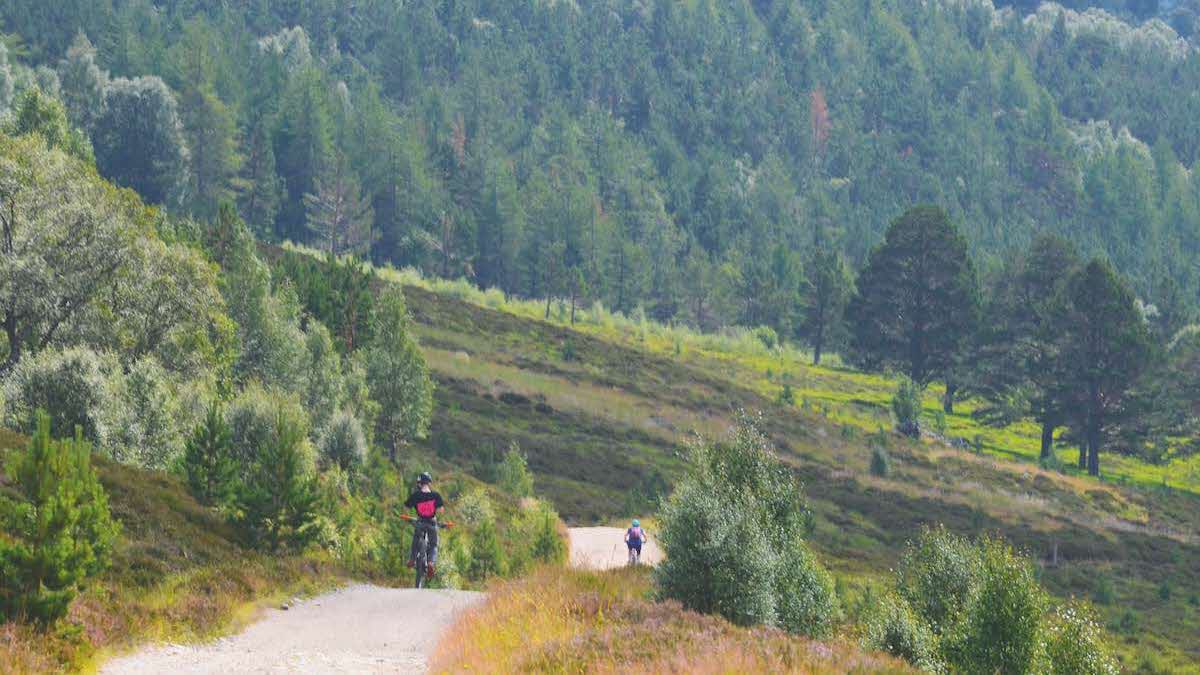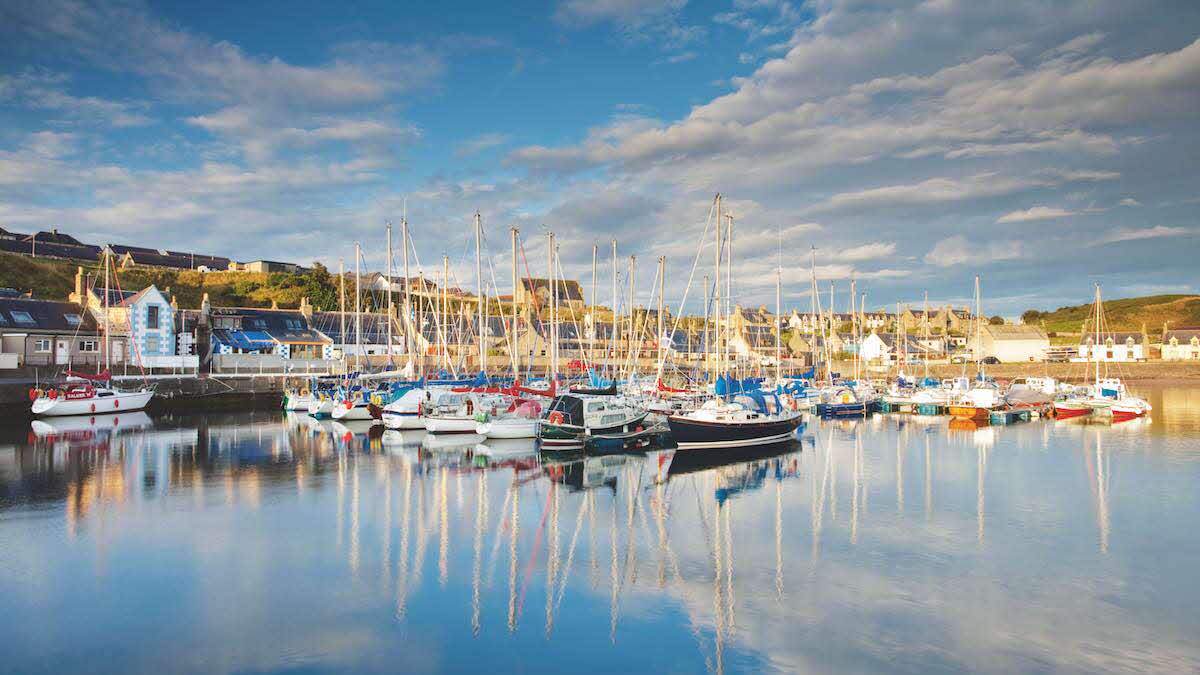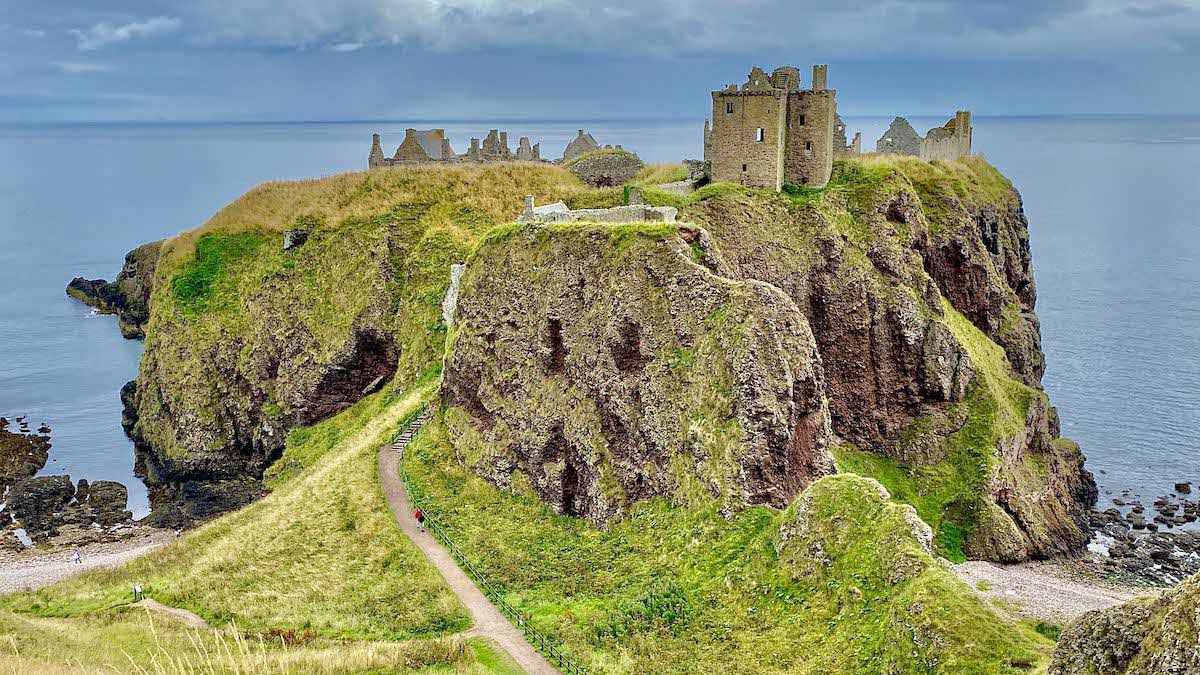The Best of Both Worlds
Jonathan Manning embarks on a seven-site tour of fabulous north-eastern Scotland, dotted with castles, distilleries and mountains to captivate lovers of both nature and culture.
My first glimpse of the River Spey on the drive down from Inverness is thrilling. Shallow, wide and steady, the water sparkles whenever the sun breaks through the cloud. With dense pine trees on either side, this could be Canada or Alaska, an enticing sense of wilderness on the northern edge of the Cairngorms. The mountains of the National Park, including Ben Macdui – Britain’s second highest – brood a few miles to the south, while outdoorsy hubs Grantown, Aviemore and Kingussie hug the banks of the Spey.
Grantown-on-Spey is the first stop of this tour of north-east Scotland, a stone-built town with a broad high street and an impressive array of independent stores, from a hardware shop to a greengrocer’s, as well as the attractive-looking cafes and pubs that a popular tourist destination can support. It’s barely a five-minute stroll from the centre of town to Grantown-on-Spey Caravan Park, a large Affiliated Site (AS) carved into a hillside, with lodges and static caravans on its higher ground and generous, level pitches for tourers.
For some campers the site serves as a launchpad for the North Coast 500 route around the top of Scotland, which starts just a few miles away in Inverness, but to whizz through this area is to miss a trick. There are fabulous walks and bike rides on the site’s doorstep, including through Anagach Wood, a mature forest threaded with paths that lead down to the Spey, and home to red squirrels, as well as the significantly rarer capercaillie and pine marten. For hikers and mountain bikers, the Dava Way is a hard-packed, disused railway line that can be followed for 24 miles from the site to Forres on the Moray coast, crossing the 1,050ft (320m) summit of Dava on the way.

The Lairig Ghru route at the heart of the Cairngorms National Park
Whisky Country
The off-road trail offers a more direct route to the coast than the one I follow to Sunnybrae CL, along a road where the signs read like an optic run in a well-stocked gentlemen’s club. This is whisky country; half of Scotland’s distilleries are within a few miles of here, including household names such as Glenfiddich, Aberlour and Cardhu. Well, when in Rome... I book a tour of The Glenlivet. The guide, Archie, is very keen on the definite article: this isn’t Glenlivet, but The Glenlivet, making clear that this is the only whisky from the valley of the River Livet allowed to use the Glenlivet name. The distillery itself feels like a swanky Mayfair hotel, with subtle lighting, perfectly polished bottles and rugged oak casks. Even the extra-tall copper stills are theatrical.
The tour is fascinating. The Glenlivet was the first licensed distillery in Scotland, opening legally in 1823, at a time when customs officers were engaged in a running battle with illegal stills and whisky smugglers. The distillery is now owned by a large foreign drinks group, but it’s still decidedly ‘local’ in important ways: its barley comes from a farmers’ co-operative less than 20 miles away, and its water is all drawn from Josie’s Well, which we can see higher up the hillside.
Much of The Glenlivet’s magic is due to the barrels, which give very different flavours to its whiskies. The 12-year-old single malt, for example, is casked in American white oak barrels and turns out to be smooth and light, while the 15-year-old single malt is matured in old Cognac barrels for a darker colour and flavours reminiscent of Christmas cake.
Happily, the distillery provides miniature bottles, so designated drivers can enjoy their samples back on site. I resolve to save mine for a clear night, when I’ll sit outside the awning and gaze at the stars. I keep my fingers crossed that I won’t have to wait too long – Glenlivet has a prestigious location within an International Dark Sky Park.
Alongside a seemingly endless line of distilleries, the road to the coast also passes the headquarters of two other firm Scottish favourites: Walkers Shortbread in Aberlour; and Baxters, where, naturally, a café serves soup.
Moray-Go-Round
A few miles to the north on the coast, the star dish is cullen skink, a thick soup made with haddock, potatoes and onions, and enriched with milk or cream. The Cullen Bay Hotel, a few walkable miles from Sunnybrae CL, is a former winner of the World Cullen Skink Championship!
The CL gazes out to sea (the Northern Lights were visible the night before my visit – if only I’d had a pitch and my whisky) and a reliable bus service makes a one-way walk along the Moray Coastal Trail a popular option for campers, according to site owner Michael Deering.
The trail passes Findochty and Portknockie before reaching Cullen, the villages having the feel of genuine fishing harbours – the streets here have small shops and traditional pubs, rather than delis and wine bars. Squat, stone cottages hunker down out of the way of North Sea gales, but they’re pretty, too, many painted in bright colours. In Findochty a melancholic whitewashed statue of a fisherman, known as the White Mannie, gazes out over the trawlers and harbour, a memorial to local men who never returned from the World Wars.

Findochty
For many adults, the highlight of the walk is the remarkable Bow Fiddle Rock, a sea stack made hollow over time by the elements, while children will love the long, sandy beach at Cullen.
Turning south, a gentle drive leads to Huntly Castle Caravan Park, another AS that won the AA’s Campsite of the Year (Scotland) award in 2020. The family section overlooks a green and a play park, enabling parents to keep an eye on their children, while an adults-only zone offers a more peaceful haven.
The local solicitor’s office sells day permits for salmon fishing on the River Deveron, and there are about 30 golf courses within 30 minutes’ drive, says Hugh Ballantyne, who has managed the campsite since it opened 26 years ago. “There’s so much to do in the area, including castle trails and whisky trails, and there are lots of forest trails for walkers and cyclists,” he says. The site even has an e-bike hire facility.
It’s barely a 10-minute walk to Huntly town centre, where Huntly Castle is the star attraction. Previously the site of the brilliantly named Peel of Strathbogie, Huntly Castle once belonged to Clan Gordon and fell into ruin during the 17th century. Nonetheless, the surviving remains are sufficiently intact to give a fascinating insight into its history.
The turreted Crathes Castle, just outside Banchory, is in much better nick despite being decades older – even its huge yew hedge dates from 1702. Crathes still has artwork on its walls and a proper roof, although it’s the formal gardens and magnificent parkland estate that really catch the eye. Shaggy-fringed Highland cattle greet visitors, while information posts identify the rich variety of trees in the park.
A couple of miles west along the River Dee sits Silverbank Club Campsite. This is another good base for walking and cycling, and I follow site manager Sue Markham’s recommendation to hike to the top of Scolty Hill, easily identifiable by the tower that sits atop it. The 360° panorama from the summit is well worth the thigh-burning effort; the vista over the Dee Valley of heather moorland and dense pine forests captures this region of Scotland perfectly.
Flying Fish
Early the next morning I set out on foot to see another emblem of Scotland: wild salmon. It’s mid-October, when mature fish return from the sea and undertake the formidable upstream pilgrimage to their spawning grounds. At the Falls of Feugh, however, it’s not so much a challenge as an ordeal, with the fish forced to leap up a rocky staircase. Early morning and evening are apparently the best times of day to see the acrobatics, as fish fling themselves out of the water and leap to the next pool. The cascading water and foaming swirls prove hypnotic, but despite spending 20 minutes on the footbridge I fail to spot a single salmon, and seek consolation in a fabulous breakfast at the Birdhouse Café on Banchory High Street, before leaving for Greenpark CL just out of town.
This fabulously well-appointed site offers five fully serviced, hardstanding pitches in a quiet corner of a farm above a small salmon stream, with the added bonus of toilets and hot showers (shared with the residents of a handful of camping pods). Owner David Clark says the site gets fully booked from April to October, and that throughout the summer he could fill the pitches three times over – and no wonder when he’s only charging £14 per night. “So many people book their next stay as they’re leaving,” he says. David has created a two-mile walk that takes advantage of a short stretch of disused railway line, originally built for Queen Victoria to travel to Balmoral, another of the many castles in the area.
One of the most striking fortresses in the whole of Scotland – and there are over 260 castles, stately homes and ruins in Aberdeenshire alone – is perched on the coast just four miles south of my next stop. Dunnottar Castle is pure catnip for Instagrammers, surrounded on three sides by the sea and protected by towering cliffs. The stronghold has a colourful history – William Wallace apparently attacked an English garrison here, setting fire to the chapel and forcing fleeing soldiers over the cliffs. Mary, Queen of Scots stayed at the castle in 1564; and the 5th Earl Marischal kept a pet lion here at the end of the 16th century. Today, the best view is arguably of, rather than from, the ruins, but it’s unquestionably an unmissable attraction.
Dunnottar is a popular four-mile walk along the coast from Stonehaven Queen Elizabeth Park Club Campsite, with the chance to stop for refreshments in town – the Seafood Bothy on the pretty harbour comes highly recommended and the award-winning Carron Fish Bar is a popular choice. It claims to be the creator of the deep-fried Mars bar (once again... when in Rome…), and an American tourist outside proudly tells me that, having sampled Buffalo chicken wings at their place of origin – the Anchor Bar in Buffalo, New York – he had now flown across the Atlantic to try the deep-fried confectionery at its birthplace.

Dunnottar Castle by Club member Martin Wood
The Club site is mere seconds from the long stretch of beach that leads to Stonehaven, and campers who don’t fancy a dip in the North Sea can swim in the open-air lido – heated to 28ºC – next to the site. In the evening, the beachside walkway into town has echoes of a Mediterranean boardwalk, with its floodlights and lapping waves – well, “plus a few more layers!” says caravanner Bart Simonis.
A direct 40-minute bus service to Aberdeen offers entertainment alternatives on rainy days, site manager Muriel Wardrop informs me, although there’s an abundance of attractions closer by, including golf, paddleboarding and sea safaris to spot the puffins and dolphins that patrol the coastline.
Forfar and Away
It’s a wrench to turn my back on the coast and head inland, although as its name suggests, Forfar Lochside Club Campsite is not short of water by which to relax. It’s a two-mile, 40-minute walk around the loch and country park, and only five minutes to stroll into the small market town, which seems unduly blessed with supermarkets for a place of this size, meaning motorhomers can park up for the duration of their stay.
Relief Site Manager Sandra Little highlights a number of places to visit in the area, starting with Glamis Castle (pronounced ‘Glarms’) – the setting for Macbeth and the childhood home of Queen Elizabeth the Queen Mother – and extending to Kirriemuir, birthplace of Peter Pan creator, JM Barrie (there’s a statue of Peter Pan in town), and Dundee, where the extraordinary V&A Dundee design museum towers over the Firth of Tay like a man-made cliff face.
Dundee feels like a fitting full stop to a tour where nature and mankind have both made extravagant statements, from dramatic coastline, forests, rivers and hills to castles, distilleries and museums. It’s a symbiotic relationship, and time after time it has proved pure alchemy – well, gold in a glass anyway. Slàinte Mhath!

